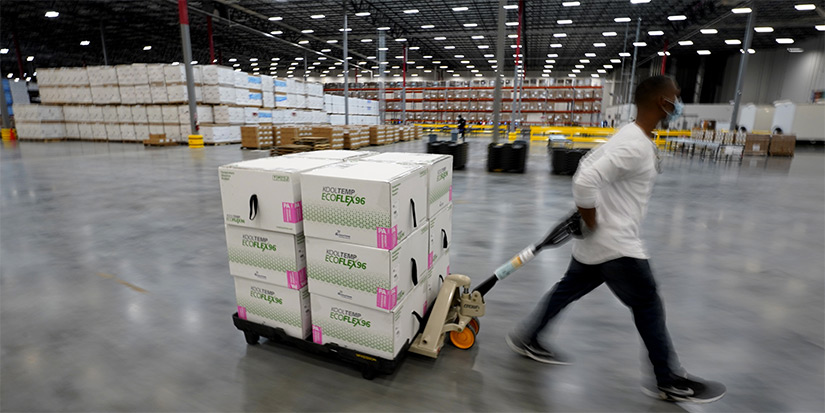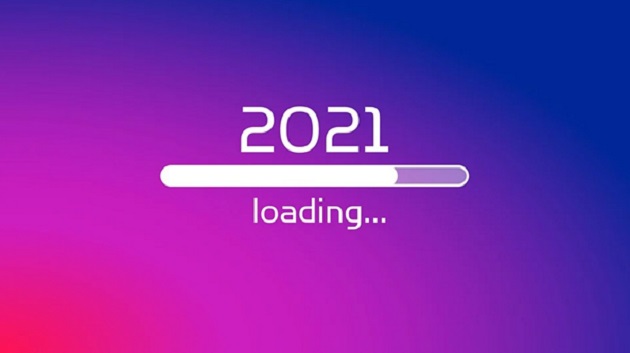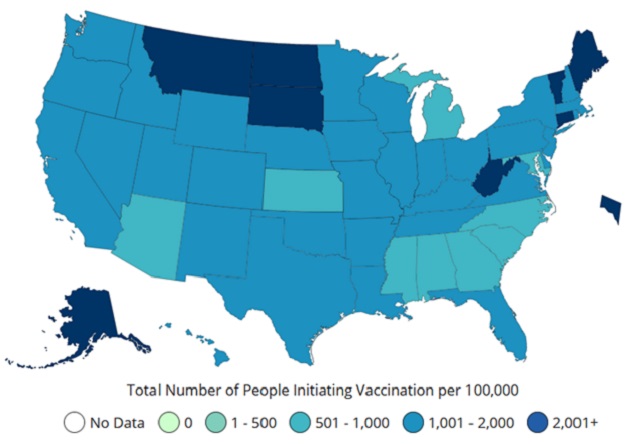
This Vaccine Map Will Define 2021
-
 Patrick Watson
Patrick Watson
- |
- January 5, 2021
- |
- Comments
Happy New Year. Now we get to read all the 2021 economic forecasts, yay.
Many have optimistic outlooks because they expect the COVID-19 pandemic to end this year. They vary mainly on when the inevitable boom will start. But nearly all assume…
- The coronavirus vaccines are safe and effective, and
- They will be given widely and quickly, restoring consumer confidence and business activity.
That first assumption has some scientific support, based on the clinical trials, though we could learn differently as more people receive the vaccines.
The second is more troubling. Vaccinations aren’t proceeding as quickly as hoped.
This matters to the economy as well as public health. The much-forecasted growth will take longer if virus cases keep filling hospitals.
That makes vaccine progress a critical economic indicator. It will tell you what to expect in 2021.

Source: Pixabay
Cascading Fiasco
This time last month, we were being told the US would give 20 million people their first dose by year-end. Many federal officials said so, as did Vice President Mike Pence in a December 21 tweet.
Like what you're reading?
Get this free newsletter in your inbox regularly on Tuesdays! Read our privacy policy here.
It didn’t happen. According to CDC data, only 4.2 million people had received their first injection as of January 2. Even with reporting delays, the total was nowhere near 20 million at year-end.
What happened? A cascading fiasco:
- Manufacturers had quality control, storage, and shipping issues.
- The federal government didn’t distribute enough doses to states.
- States weren’t prepared to give them to the priority groups quickly.
- Many eligible people declined to be vaccinated, or at least were in no hurry.
This CDC map shows vaccine progress by state (as of January 2).

Source: CDC
Scientists think the virus will start receding (“herd immunity”) when around 70% of the population is immunized by either vaccination or prior infection. The map shows only a few states have given the first dose (each person needs two) to more than 2% of their residents.
So we are a long way from herd immunity… which means the economy is a long way from returning to anything like normal.
The operational problems are solvable, but it will still take time for that map to turn a dark, solid blue. (You might want to bookmark this link and keep an eye on it.)
The estimates I reported last month projected 70% vaccinated by September—but that was assuming a faster start. Those expectations now look less reasonable.
There’s some talk of delaying or even skipping the second doses in order to get at least partial protection to more people faster. Experts vary on whether that’s wise. But it would still leave another, stickier problem.
“No, Thanks”
Rather than welcoming the vaccine, a surprising number from the initial groups are declining it.
Many Southern California healthcare and frontline workers—as many as half in some places—refused the vaccine. Meanwhile, Ohio Governor Mike DeWine said 60% of his state’s eligible nursing home workers weren’t electing to be vaccinated.
Like what you're reading?
Get this free newsletter in your inbox regularly on Tuesdays! Read our privacy policy here.
If people who have personally seen what COVID-19 does, and probably had co-workers struck down, don’t want the vaccine, it’s hard to foresee a better response from the general public.
What are they thinking? The Los Angeles Times summed it up:
Respondents to the Kaiser Family Foundation survey who said they probably wouldn’t get the vaccine said they worried about side effects; they lacked trust in the government to ensure the vaccines were safe; they had concerns about the role of politics in the development of the vaccines; or they believed the dangers of COVID-19 had been exaggerated.
Reasonable or not, those concerns matter. Fewer people vaccinated means the virus will recede more slowly, which means many consumers will stay cautious and businesses will continue suffering.
And worse, time is not on our side.

Source: Pixabay
Stubborn Math
Our viral adversary is evolving. A more contagious variant recently emerged in the UK and is already spreading around the world, including in the US.
News stories often note the variant is no more severe, as if that should make us feel better. It shouldn’t.
Math says a 50% more transmissible virus is a much bigger problem than a 50% more lethal one. The added cases will mean many more deaths, even though any particular patient is no more likely to die (assuming they get the same level of care. They won’t, if hospitals are full.).
This also affects the herd immunity calculations. Stamping out a more contagious virus requires vaccinating more people. That 70% estimate may be more like 90% now, according to some epidemiologists.
So…
- The number we need to vaccinate is growing,
- We aren’t vaccinating fast enough in the first place, and
- Hospital capacity is approaching its limits just as the virus spreads faster.
These are serious problems if we want a better economy this year. But there’s one more mystery.
Like what you're reading?
Get this free newsletter in your inbox regularly on Tuesdays! Read our privacy policy here.
Financially, the people with the most at stake are business owners and corporate leaders. They have some political influence. But instead of using it to demand faster vaccination progress, many just gripe about “lockdowns.”
Lockdowns aren’t ideal, but avoiding them won’t solve the problem. The hard-hit restaurant, travel, and other sectors will not come back until consumers believe the virus is corralled… which won’t happen this year unless vaccinations move a lot faster.
So watch that map. Everything depends on it.
See you at the top,

Patrick Watson
@PatrickW
P.S. If you like my letters, you’ll love reading Over My Shoulder with serious economic analysis from my global network, at a surprisingly affordable price. Click here to learn more.

 Patrick Watson
Patrick Watson
